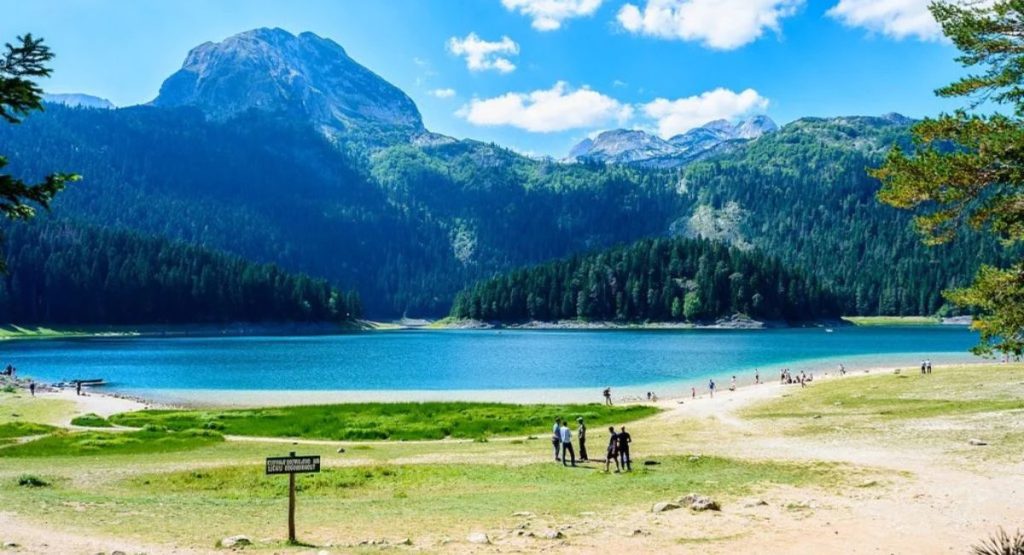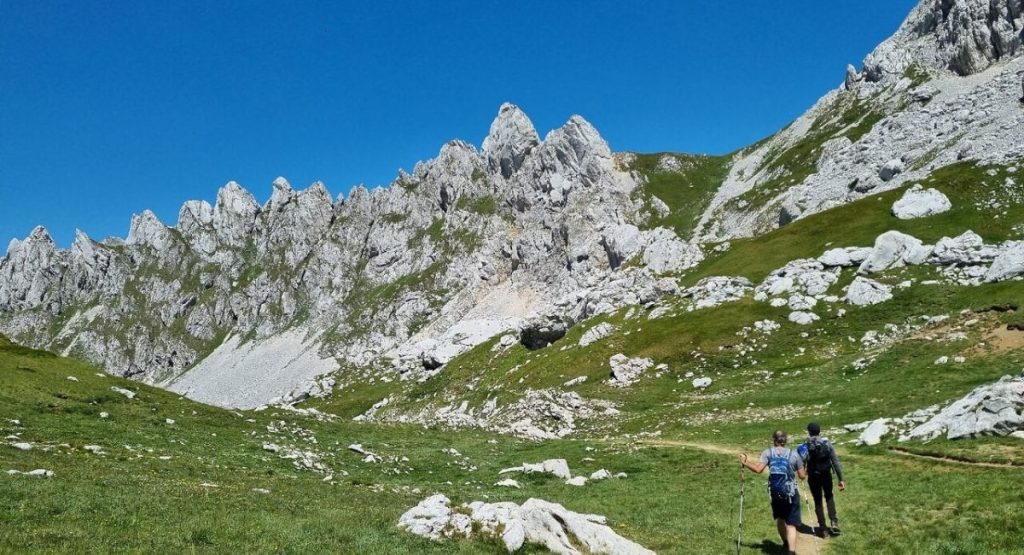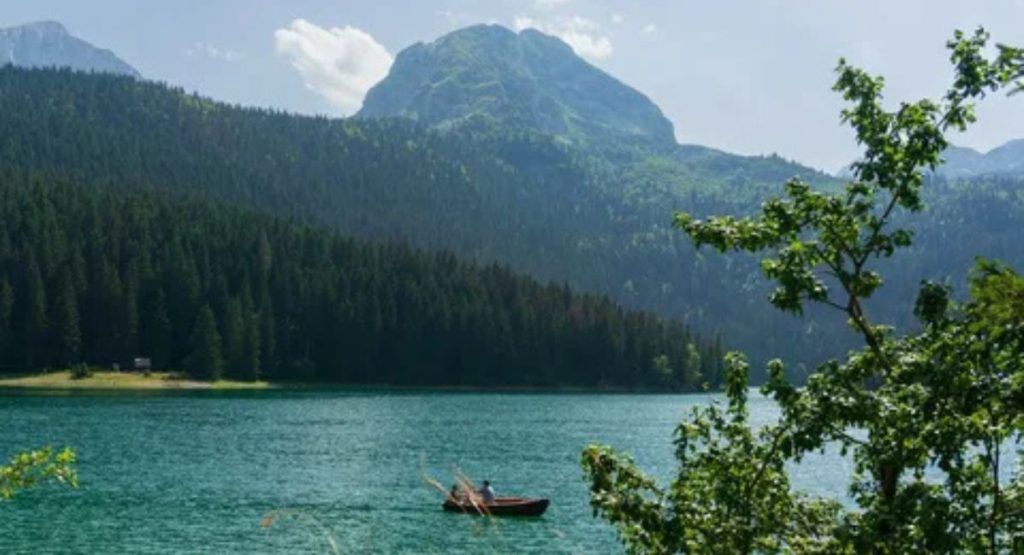Have you ever scrolled through photos of Montenegro and thought, “I need to see that place, but I have no idea where to start”? That’s how a lot of travelers feel when they first look into how to plan your visit to stunning Durmitor National Park. With so many trails, lakes, and activities to choose from, it’s easy to feel excited but also a little lost.
This guide is here to make everything simple. I’ll walk you through what to see, when to go, how to get there, and the best ways to spend your time—whether you want easy walks, big hikes, or just peaceful moments by the lakes. By the end, you’ll have a clear plan in hand so you can stop worrying about logistics and start looking forward to your Durmitor adventure.
1. What Makes Durmitor National Park So Special?
Durmitor isn’t just another pretty landscape. It’s a UNESCO World Heritage Site and the crown jewel of Montenegro’s wilderness. Here’s why it deserves a spot on your itinerary:
- Breathtaking Landscapes: Over 40 peaks reach above 2,000 meters, with Bobotov Kuk being the highest at 2,523 meters.
- Glacial Lakes: Known as “mountain eyes,” these lakes dot the valleys. The most famous is Black Lake (Crno Jezero).
- Tara River Canyon: At 1,300 meters deep, it’s one of the deepest gorges in Europe, perfect for rafting and ziplining.
- Rich Biodiversity: Dense pine forests, How to Plan Your Visit to Stunning Durmitor National Park – Hikes, Lakes and Travel Tips wildflowers, and wildlife like bears, wolves, and eagles thrive here.
- Outdoor Playground: Hiking, rafting, biking, skiing, camping—you’ll never run out of things to do.
If you love both adrenaline and quiet nature escapes, Durmitor balances the two beautifully.

2. Where Is Durmitor and How Do You Get There?
Durmitor National How to Plan Your Visit to Stunning Durmitor National Park – Hikes, Lakes and Travel Tips Park is located in northwestern Montenegro, with Žabljak as its main gateway town.
- From Podgorica: About 2.5 to 3 hours by car. Public buses run to Žabljak, but driving gives you flexibility.
- From Kotor or Budva: Around 4–5 hours. The drive is stunning but winding—expect mountain roads.
- From Sarajevo (Bosnia): About 4 hours, crossing the border.
- By Tour: Many travelers without a car join organized day trips from Podgorica or the coast.
Pro Tip: If you only have a short time, rent a car. Public transport exists but limits your ability to explore remote hikes or lakes.
3. Best Time to Visit And How to Plan Your Visit to Stunning Durmitor National Park
The park changes dramatically with the seasons, so your experience depends on timing.
- Summer (June–September): Warm, ideal for hiking and rafting. Trails are clear, lakes are accessible. This is peak season, so expect more visitors.How to Plan Your Visit to Stunning Durmitor National Park – Hikes, Lakes and Travel Tips
- Autumn (October): Stunning fall colors, quieter trails, cooler nights. Some facilities begin to close.
- Winter (December–March): A paradise for skiing and snowboarding around Žabljak. Hiking trails are snow-covered.
- Spring (April–May): Snow melts, rivers surge, flowers bloom. Some trails may still be blocked by snow.
For most first-time visitors, late June to early September is the sweet spot.
4. How Long Should You Stay in Durmitor?
Your ideal duration depends on your goals:
- One Day: Black Lake walk, short hike, quick look at Tara Bridge.
- Two to Three Days: Add Bobotov Kuk hike, Tara River rafting, and time for smaller lakes like Zminje or Jablan.
- Four to Five Days: Explore remote trails, bike rides, and overnight camping.
- A Week or More: Combine with nearby areas like Biogradska Gora National Park or the Morača Monastery route.
If you want more than just a photo stop, 2–3 days is perfect for most travelers.
5. Where to Stay: Žabljak and Beyond

Most travelers base themselves in Žabljak, a small mountain town inside the park.
- Žabljak: Best for convenience—restaurants, grocery stores, and proximity to Black Lake. Options range from budget hostels to cozy guesthouses How to Plan How to Plan Your Visit to Stunning Durmitor National Park – Hikes, Lakes and Travel Tips Your Visit to Stunning Durmitor National Park – Hikes, Lakes and Travel Tips and mid-range hotels.
- Rural Cabins: Just outside town, you’ll find wooden cabins and eco-lodges that offer quiet and stunning views.
- Camping: For a wilder experience, there are campsites and wild camping spots (respect the rules).
Mistake to Avoid: Staying too far outside Žabljak if you only have 1–2 days. The drives eat into your exploration time.
6. Top Things to Do in Durmitor National Park
Hike to Black Lake (Crno Jezero)
The most iconic spot in the park, just 3 km from Žabljak. A circular trail around the lake How to Plan Your Visit to Stunning Durmitor National Park – Hikes, Lakes How to Plan Your Visit to Stunning Durmitor National Park – Hikes, Lakes and Travel Tipsand Travel Tips takes about 1.5 hours. Go early morning or evening for reflections and fewer crowds.
Conquer Bobotov Kuk
The highest peak in Montenegro. The classic hike takes 7–9 hours round trip, starting near Sedlo Pass. It’s challenging but rewarding with panoramic views.
Explore Tara River Canyon
Choose between:
- Rafting: Half-day or full-day tours available.
- Zipline at Đurđevića Tara Bridge: Thrilling way to see the canyon.
- Viewpoints: Simply stand on the bridge and marvel at the depth.
Discover Hidden Lakes
Smaller lakes like How to Plan Your Visit to Stunning Durmitor National Park – Hikes, Lakes and Travel TipsJablan, Zminje, and Škrčka are quieter and surrounded by pine forests.
Scenic Drives and Passes
The road from Žabljak to Plužine (via Sedlo Pass) is one of the most beautiful drives in Montenegro.
Winter Activities
Skiing and snowboarding in Žabljak are affordable alternatives to Alpine resorts.
7. Challenges and Misconceptions
- “Durmitor is only for serious hikers.” False. There are trails for all levels, from flat lake walks to multi-day treks.
- “It’s too remote.” How to Plan Your Visit to Stunning Durmitor National Park – Hikes, Lakes and Travel Tips Actually, Žabljak is accessible and has amenities, though don’t expect luxury.
- “You can swim in every lake.” Some lakes are freezing cold even in summer—great for a dip, but not a long swim.
- “It’s the same as the Alps.” Durmitor feels wilder, less commercialized, and more affordable.
8. Practical Tips for First-Time Visitors

- Bring layers: Mountain weather changes quickly.
- Carry cash: Not every guesthouse or tour operator accepts cards.
- Wear proper footwear: Trails can be rocky and muddy.How to Plan Your Visit to Stunning Durmitor National Park – Hikes, Lakes and Travel Tips
- Download offline maps: Cell service is patchy in some areas.
- Respect wildlife and nature: Stick to trails, don’t litter, and be cautious of bears (rare but present).
9. Alternatives and Comparisons
- Biogradska Gora National Park: Another Montenegrin park, smaller but lush and green.
- Plitvice Lakes (Croatia): More waterfalls, but also more crowded and touristy.
- Julian Alps (Slovenia): Similar dramatic peaks, but Durmitor feels more rugged and less developed.
Durmitor stands out for its balance of raw beauty and accessibility.
10. Sample 3-Day Itinerary for Durmitor
Day 1: Arrival in Žabljak, How to Plan Your Visit to Stunning Durmitor National Park – Hikes, Lakes and Travel Tips walk around Black Lake, sunset at Tara Bridge.
Day 2: Hike Bobotov Kuk or take a shorter hike, afternoon relaxation in Žabljak.
Day 3: Morning rafting on Tara River, scenic drive over Sedlo Pass, depart.
11. FAQs About Visiting Durmitor National Park
Q: Do I need a permit to enter?
Yes, there’s a small entrance fee (usually collected near Black Lake).
Q: Is Durmitor good for families?
Absolutely. Shorter trails and the lakes are family-friendly. Just avoid strenuous peaks with young kids.
Q: Can I visit without a car?
Yes, but options are limited. Tours from Podgorica or buses to Žabljak work, but a car gives you freedom.
Q: Are there guided hikes?
Yes, local guides in How to Plan Your Visit to Stunning Durmitor National Park – Hikes, Lakes and Travel Tips Žabljak offer tours to peaks and lakes, helpful if you’re nervous about navigation.
Q: Is it safe for solo travelers?
Yes. Trails are generally safe, but always tell someone your route and check weather conditions.
Conclusion: Your Durmitor Adventure Awaits
Planning your visit to stunning Durmitor National Park doesn’t have to be complicated. How to Plan Your Visit to Stunning Durmitor National Park – Hikes, Lakes and Travel Tips Whether you’re after a gentle lake walk, a heart-pounding mountain summit, or a quiet drive through alpine valleys, this park has something for you. The key is knowing how much time you have and matching your itinerary to your energy level.
If Montenegro is on your travel list, make sure Durmitor isn’t just a side trip—it’s the highlight. Once you’ve stood on the shores of Black Lake or looked out across the Tara Canyon, you’ll understand why so many travelers leave with memories that last a lifetime.How to Plan Your Visit to Stunning Durmitor National Park – Hikes, Lakes and Travel Tips
